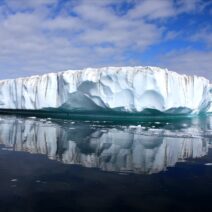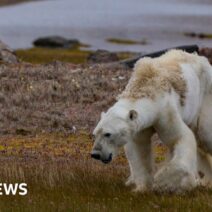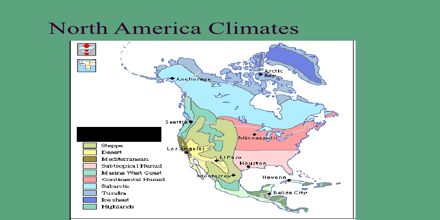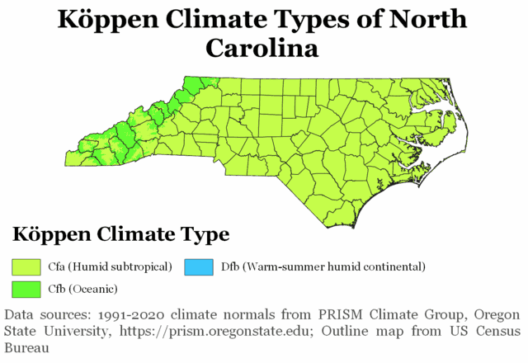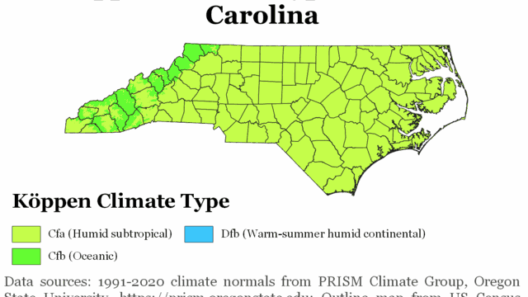North America is a vast expanse of land that offers an incredible diversity of climates. It is perhaps the only continent where one can traverse from the icy tundra of the Arctic to the balmy shores of the Caribbean in a matter of days. Each climatic zone is a unique thread in the rich tapestry of environmental conditions, contributing to the continent’s eclectic biodiversity and the myriad of experiences it offers. This article will explore the different climatic regions across North America, emphasizing their individual characteristics and the implications of these diverse climates on the environment and society.
To begin, let us venture northward, where the Arctic chill dominates. This region, characterized by its frigid temperatures and perpetual ice cover for much of the year, encompasses the northern territories of Canada and parts of Alaska. Here, the climate belongs to the world of extremes, where the sun barely glimmers on the horizon during winter, leaving a landscape enveloped in a frigid embrace. The permafrost, like nature’s frozen sponge, retains moisture while preventing the growth of roots; a seemingly barren land, yet paradoxically alive with unique adaptations.
Among the inhabitants of this inhospitable environment are the resilient polar bears, Arctic foxes, and migratory birds. These species exemplify how life can flourish in seemingly inhospitable conditions. They have evolved behavioral and physiological mechanisms that enable them to endure subzero temperatures. However, paradoxically, the very ice that sustains these species is now disappearing at an alarming rate due to climate change, transforming this icy wilderness into a story of impending peril.
As we move southward, we encounter two distinct climatic zones: the continental climate of the Midwest and the temperate climates of the Southeast. The Midwest, often referred to as the “breadbasket of America,” showcases a continental climate that experiences four distinct seasons. Here, the summer months bloom with verdant fields of wheat and corn—a vivid green that contrasts sharply with the crystalline frost of winter. Storm systems sweep through, leaving behind spectacular thunderstorms in the summer, while blizzards rage in the depths of winter, forcing cities into hibernation.
This bountiful region not only provides sustenance to millions but also presents challenges. Alternate periods of drought and flooding emerge as the dual threats to agriculture, revealing the delicate balance between abundance and scarcity. The metaphor of the seasons is apt—just as life emerges with spring, it can also retreat with winter, reflecting the cyclical nature of climate patterns.
In stark contrast, the Southeast region basks in a humid subtropical climate. The air is thick with the scent of magnolias and the heavy humidity that permeates summer afternoons. Here, the lush landscapes fill with dense forests and sprawling wetlands, teeming with bio-diversity. The climate bestows upon this area a unique charm, characterized by warm, sultry summers and mild, temperate winters. However, with the allure of the warm sun comes the specter of storms and hurricanes—a testament to nature’s volatile temperament.
The communities in the Southeast have learned to adapt to the whims of the weather, yet the increasing frequency and intensity of hurricanes illustrate the severe repercussions of climate change. Rising sea levels threaten coastal towns while drought disrupts the delicate ecosystems. The Southeastern climate, charming yet capricious, offers an important lesson on resilience and adaptation.
Next, we journey to the arid landscapes of the Southwest, where the desert climate reigns supreme. Stretching across states like Arizona and New Mexico, the Southwest is a realm defined by its harsh beauty. Mesas, canyons, and arroyos form the rugged topography, while the relentless sun blazes overhead, creating a stark climate that shapes the flora and fauna. Cacti stand as silent sentinels in this arid expanse, conserving precious moisture and showcasing an extraordinary capacity for survival.
This landscape, often perceived as desolate, thrives with life. Creative adaptations abound as species like the roadrunner and the desert tortoise navigate the extremes of heat and water scarcity. Yet, this climate is not without its consequences. As temperatures continue to rise, the Southwest faces challenges of water scarcity, land degradation, and wildfires—an ominous testament to the fragility of this ecosystem.
Lastly, we embrace the tropical climate of the southernmost tip of Florida, where the landscape transitions dramatically. This region brings lush greenery, rich biodiversity, and vibrant ecosystems. The tropical climate offers balmy summers and mild winters, creating a paradise for flora and fauna. The Everglades, a UNESCO World Heritage site, pulsates with life, supporting myriad species found nowhere else on earth.
However, as picturesque as this region may appear, it is besieged by issues like rising sea levels, urban development, and climate-induced changes that threaten its delicate balance. The tropical paradise is a cautionary tale of how even the most idyllic environments are impacted by the relentless march of climate change.
In conclusion, the climate of North America presents an intricate mosaic of environments, from the Arctic chill to tropical heat. Each region contributes to the continent’s ecological diversity and cultural richness, yet they all share a common thread—vulnerability to climate change. As we navigate this complex landscape, understanding the unique climates across North America is imperative. They embody not just the natural beauty of our planet but also signify the urgent need to protect and preserve these environments for future generations. In this way, the call for environmental stewardship echoes across this diverse continent, reminding us of our shared responsibility as caretakers of our planet.

